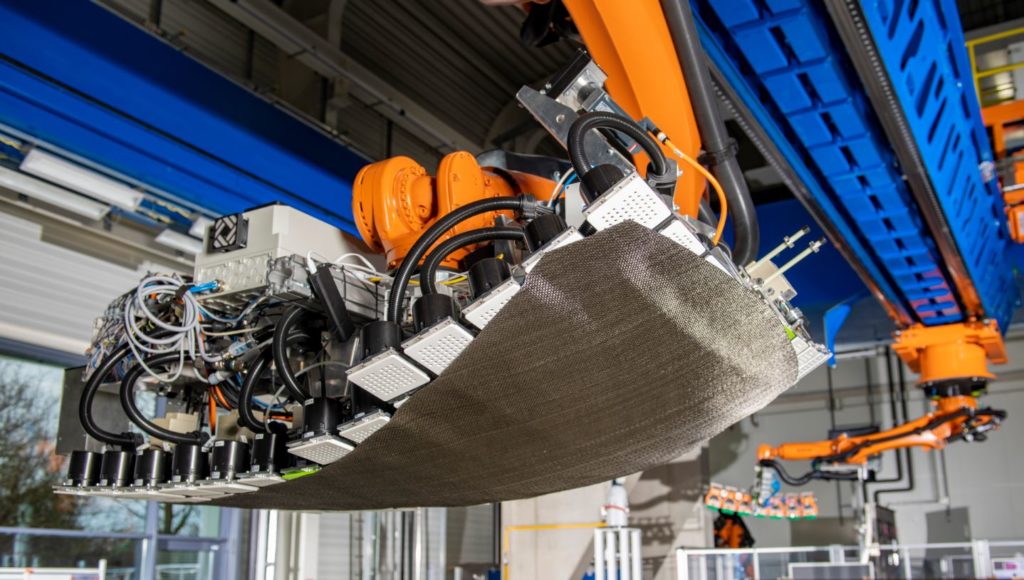Automated process chain for manufacturing large CFRP structure parts
Integrated and automated production of a dry-fibre rear pressure bulkhead
In project PROTEC NSR, a concept for an integrated manufacturing process was developed and presented for full-scale structural components – for example, an A350 rear pressure bulkhead. The demonstration component under investigation is about 4.5 metres in diameter and consists of several layers of dry fibre cut-pieces with different sizes and geometries. Lack of symmetry and the double curved geometry make the automation of the – still mostly manually fabricated component – challenging.
The individual process steps were under development in several previous projects. Now they have been successfully improved and integrated into a single process chain controlled by a newly developed manufacturing execution system. Within the project, the focus was on maintaining strong similarity to the original process and manufacturing environment. Development of tools for the ‘automation of the automation’ was also very important in order to greatly reduce the effort to implement or modify the process within the production facilities.
Manual labour minimised
The concept provides coupling of automated sub-processes, which use robotic tools and are controlled by a modular manufacturing execution system. Incoming process parameters and data from quality assurance measurements are stored and analysed during the entire process. As a result, manual labour for the process is reduced to a minimum. The sub-processes within the process chain are:
- Nesting, cutting and sorting of the cut-pieces.
- Delivery of the cut-pieces to the robotic cell.
- Application of the long structural plies with two co-working robots (autonomously recognising, locating, gripping, picking up, transporting and applying) into the mould.
- Application of the complex reinforcing plies with modular gripper (autonomously recognising, locating, gripping, picking up, draping, transporting and applying) into the mould. The draping process is monitored in-line.
- Fixation of all cut pieces by resin applicator.
- Quality measurements of applied cut pieces by means of position (edge detection) and quality (fibre angles).
- Integration of stringer with multi kinematic gripper.
- Application of auxiliary material packages and compacting of radii with multi kinematic gripper.
German Aerospace Center (DLR)
Institute of Structures and Design
Dr. Marcin Malecha · E-Mail: marcin.malecha@dlr.de · DLR.de
